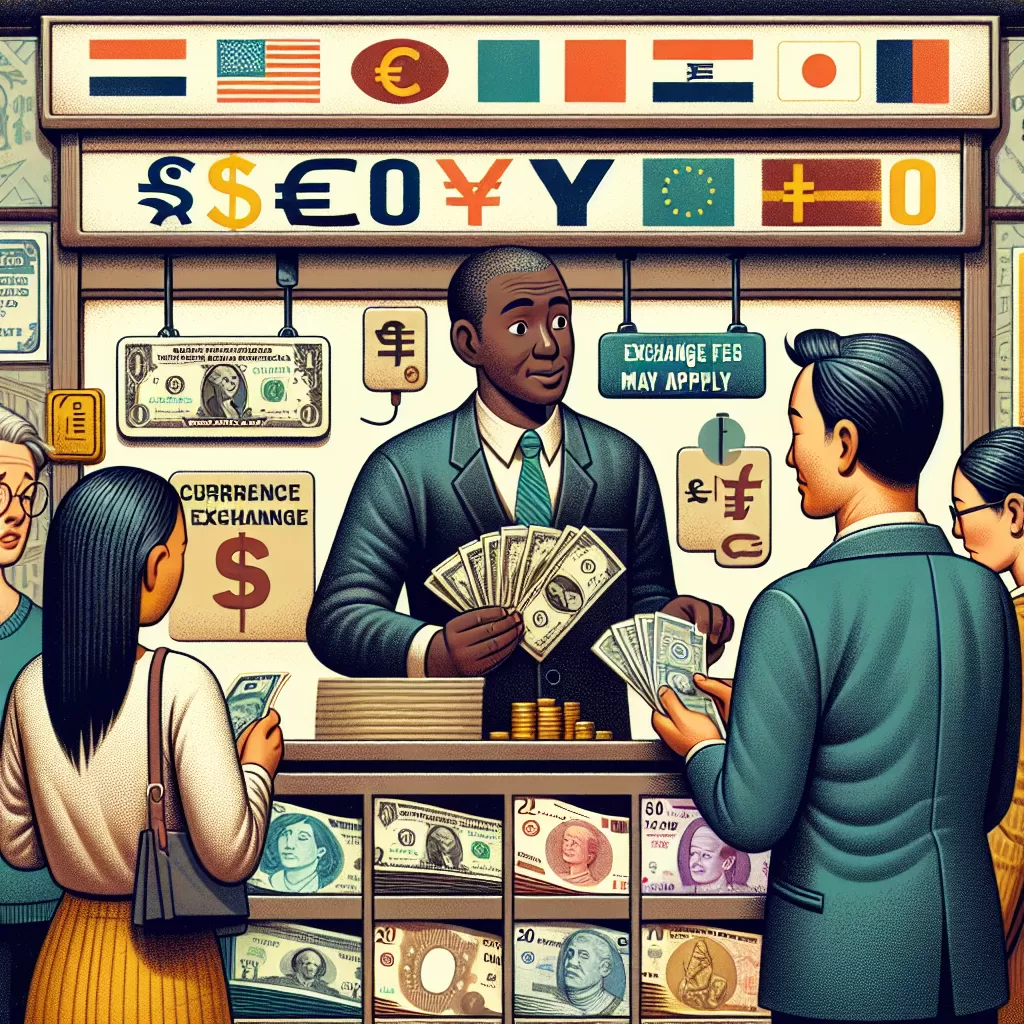How Much Is The Fee To Exchange Currency
Follow Currency Mart April 10, 2024
Where to purchase Foreign Currencies?

Introduction
Currency exchange is an integral part of contemporary global financial transactions. The global economy thrives on the exchange of currency for purposes such as international trade, doing business overseas, international travel, and online transactions. However, there is a cost to this convenience. This cost is referred to as a currency exchange fee. This article focuses on breaking down the various fees associated with currency exchange to keep you informed when undertaking such transactions.Bank Currency Exchange Fees
Banks often exhibit the safest and most commonplace venues for currency exchanges. Notwithstanding, it's crucial to ascertain the stipulated fees before proceeding. Banks have varying charges; typical percentages vary between 1-3% of the total amount being exchanged. At times, a flat fee may be charged besides the percentage, typically ranging within $5-$10. This flat fee can make smaller transactions disproportionately expensive.Credit Card Currency Exchange Fees
Credit cards provide a convenient alternative to cash, enabling access to foreign currency quickly. However, the cost of this convenience can be high, with credit card providers charging a fee over the foreign currency exchange. These "foreign transaction fees" can range between 1-3% of the transaction value.Currency Exchange Bureaus
Currency exchange bureaus are stationed at travel centers, like airports and tourist hubs. The rates these bureaus offer are usually not the best, and they charge a significant premium over the interbank exchange rate. The convenience of immediate cash upon arrival tempts people into such transactions, despite costs running between 5-20% of the total amount.Online Platforms
Online platforms like PayPal, Revolut, and TransferWise have revolutionized the way we handle foreign exchange transactions. These platforms often offer a better exchange rate compared to traditional banks. However, they still have associated currency exchange fees which are typically between 0.35-2% of the transaction value.ATM Withdrawals
Withdrawing foreign currencies from ATM abroad can seem convenient, but it's usually an expensive choice due to the exchange rate markup and fees. Banks typically charge a foreign ATM fee of $2-$5, plus a foreign transaction fee, usually around 1-3% of the withdrawal amount.Prepaid Currency Cards
Prepaid currency cards offer an easy way to carry and use money abroad. However, they usually come with an array of fees including loading fees, reload fees, ATM withdrawal fees and inactivity fees. Loading fees can range between 1-2% of the loaded amount.Conclusion
Currency exchange can be a costly affair if not handled with care. The key is to understand the fees associated with each platform and choose the most cost-effective option based on your specific needs. Remember, while speed and convenience may be tempting, they often come with a hefty price tag!
Where to purchase Foreign Currencies?